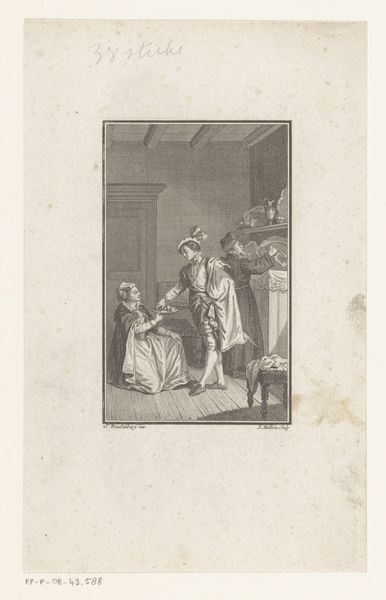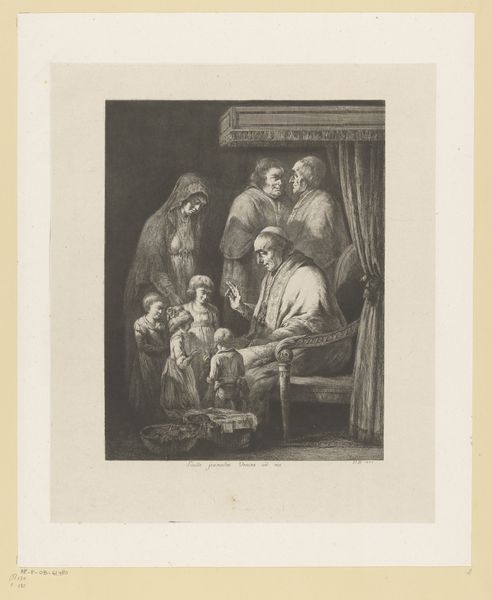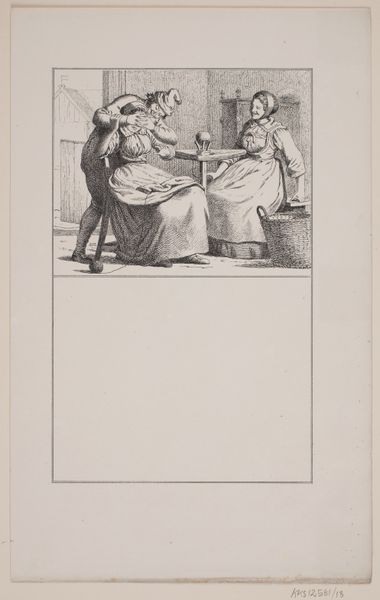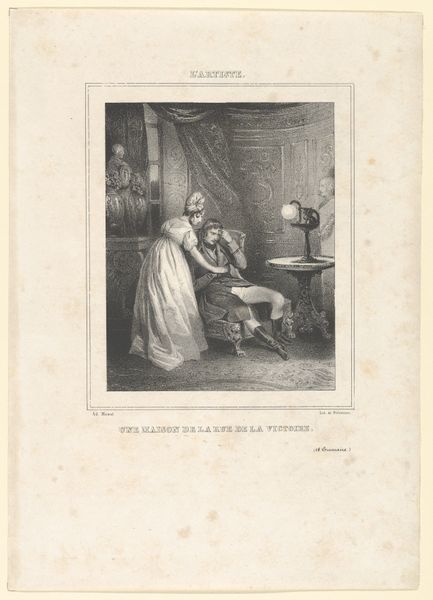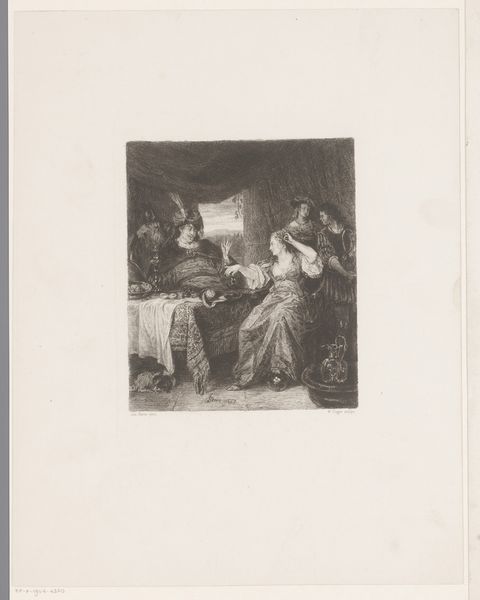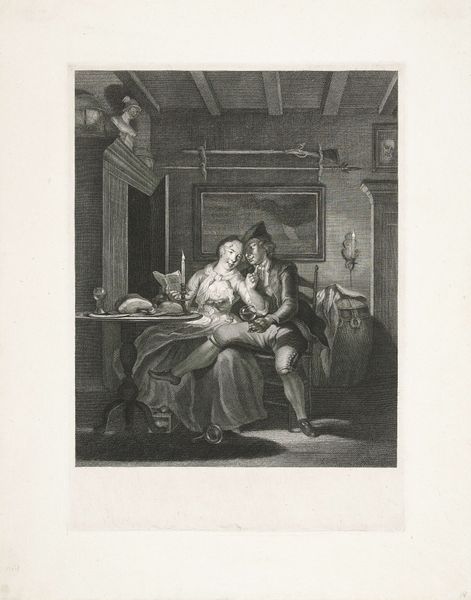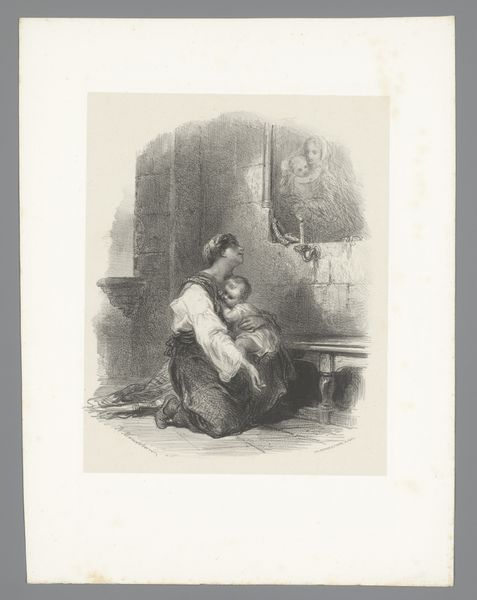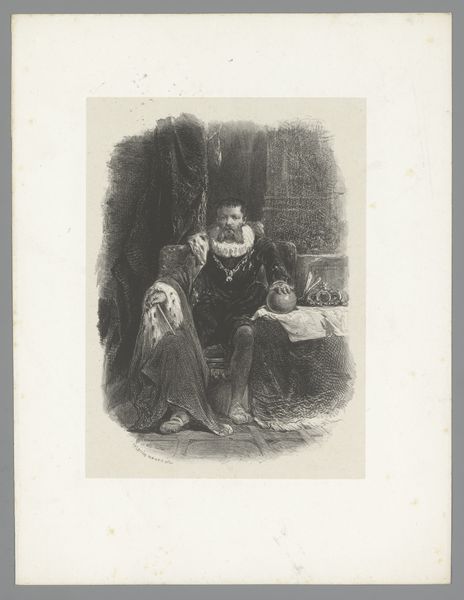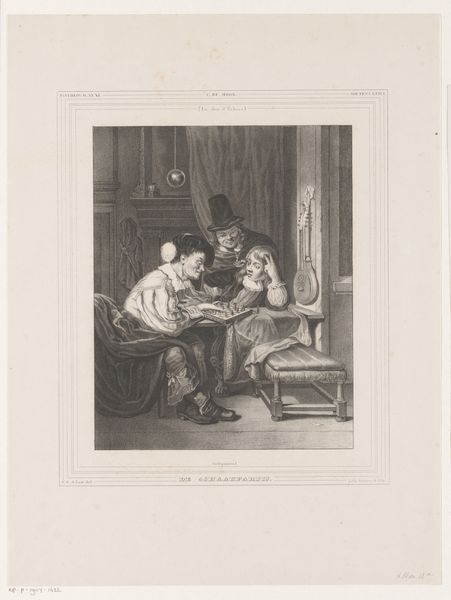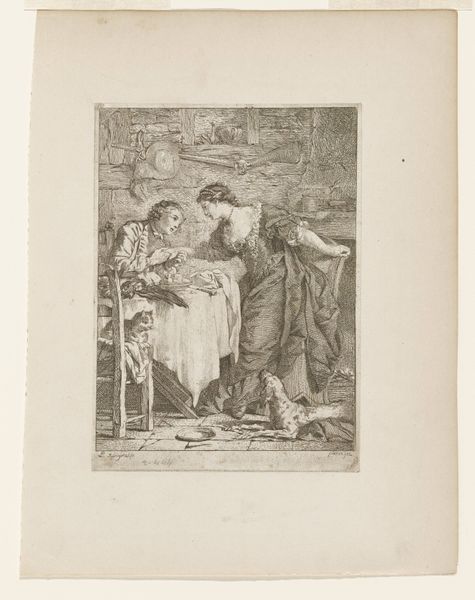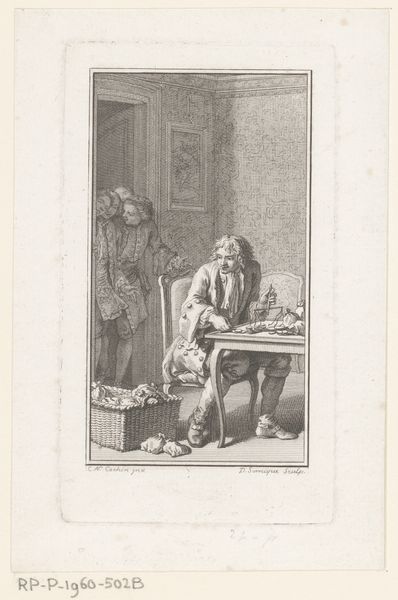
drawing, etching, paper
#
portrait
#
drawing
#
etching
#
paper
#
romanticism
#
genre-painting
Dimensions: height 275 mm, width 177 mm
Copyright: Rijks Museum: Open Domain
Curator: This etching, rendered in 1843 by Adolphe Mouilleron, is titled "Zittende man ontvangt vrouw in zijn kamer," which translates to "Seated man receives a woman in his room." The work is on paper. Editor: The immediate feeling is…awkward. A definite tension in the air. The man seems languidly uninterested, and the woman looks apprehensive. The interior setting is dark, only partially lit, contributing to that somber mood. Curator: Consider the technique of etching. The fine lines, the cross-hatching... all created by carefully incising into a metal plate and then transferring the image to paper. The choice of this reproducible medium hints at the artwork’s intent: circulation, accessibility. What type of labor do you suppose enabled Mouilleron to execute this, and, more importantly, for whom was this scene created and consumed? Editor: Good points. Mouilleron is indeed making art available to a broader 19th-century public. I think the clothing, body language, and interior details speak volumes about gender dynamics, power, and social class. I mean, look at the seated man's attire; he exudes privilege. Is she a supplicant? Is she there on business or personal errand? Are the actions on her part voluntary? All open to interpretation. Curator: And what materials were at Mouilleron's disposal? Paper production itself depended on specific mills, on laborers. What grade of paper, and what was the etching process? This affects the tonal range, the level of detail, and ultimately our reading of this "genre painting," as it has been termed. How were these paper production methods being revolutionized, perhaps? Editor: Agreed! Seeing this work as an object embedded in a socio-economic context broadens its narrative beyond this contained domestic moment. We start questioning the artist's intentions in relation to prevailing social attitudes. This piece is more than meets the eye: is it just an innocent genre painting, or perhaps it is commentary on societal norms of 19th-century Netherlands? Curator: Thinking through the lens of materiality illuminates the labor involved, it disrupts this tidy bourgeois scene. Editor: Exactly. By exploring issues of identity and class in tandem with formal artistic concerns, it gives this 1843 print resonance, then and now.
Comments
No comments
Be the first to comment and join the conversation on the ultimate creative platform.
